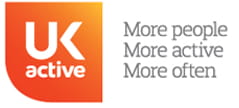Food and diets. Where to start? Every month there is a new message, a new fad, a new diet, a new superfood. At the moment all processed meats are the bad guys, while Quinoa and other grains can do no wrong. Kale, broccoli, blueberries all offer huge health benefits – according to which journal you are reading – but that list of super foods changes regularly. One recent example is the tale of the nut. For a long time now nuts have been seen as a food group that is high in fat, and therefore to be avoided. But the most recent research tells us that nuts have healing properties and are very good as a source of vitamin E and a host of other goodies.
For the average consumer who wants to eat an all-round healthy diet it is difficult; for the person wanting to modify their diet to lose weight, or to gain weight in the right places, it is a minefield.
The best advice I have ever heard came from a nutritionist who said: “Eat a rainbow and make sure it looks as close to its natural state as possible.” What she meant was eat as vast a range of foodstuffs as possible, but everything in moderation, and cut out the processed stuff.
I overheard two women in a shop having a lively conversation about diet and exercise the other day. One was talking about how her new exercise regime was going to turn her fat to muscle. I wanted to scream and pull my hair out. Fat DOES NOT turn to muscle, or vice versa. That is like putting a packet of butter on the table and expecting to turn it into steak – it ain’t going to happen.
What does happen is the composition of the human body changes. The percentage of muscle mass, i.e. the part of the human body that is made of muscle, changes depending upon diet and exercise, and the same thing happens to the fat content of the body. If you train, you will increase the size of muscle while the amount of fat deposits you have in your body will reduce. You may lose weight, you may stay the same or you may gain weight – what will definitely happen is that you will be fitter and your body will be more toned.
That is why a complex measuring system that gives a reading to show the proportions of fat, muscle, bone and water is far more useful than one that purely gives a weight.
The same two women were also talking about their diets. One of the women spoke about how she had substituted fizzy drinks for fruit juice. Highly commendable, but again I wanted to scream and shout – fruit juice is high in sugar, drinking it by the gallon will not help you lose weight. Try herbal teas, black coffee and good old fashioned water.
What both these snippets of conversation revealed is that despite all the information that abounds regarding food, fat and exercise, there are still huge gaps and misunderstandings in people’s knowledge. What is needed is a concerted effort by governments, food producers, food standards agencies and the health and fitness industry to get the correct messages across so that people everywhere can make well-informed decisions. As Olive magazine columnist and chef Dan Doherty wrote on his blog the other day: “Super foods aren’t super. Now Superman, he really is ’super’, but food? It’s just food.”












